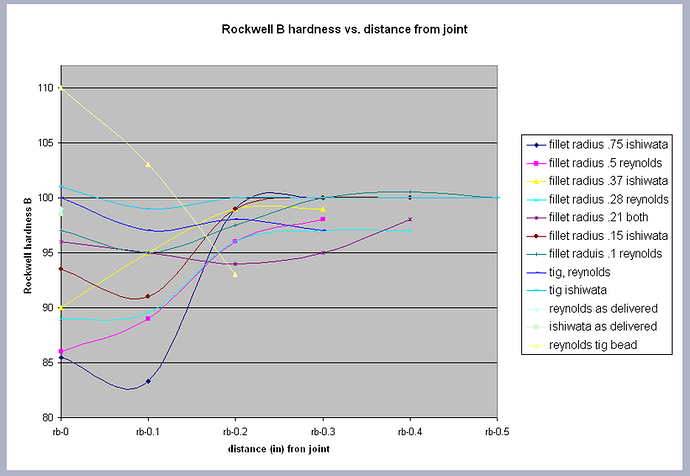I finally got around to checking out that summary, the data presented from the Bontrager study is certainly interesting, but I have to say his write-up and conclusions following it is not very good. Not to mention the typos and wrong terminology used.
Based of of the chart he made (from Keith Bontrager’s data), we can see the initial hardness of the tubing, the annealing / softening at and near the weld, and then the return to the original hardness or close to it farther away. (I believe the slight increase in hardness we see on some of them could possibly be due to measurement error, statistical probablility, etc. I don’t know what his testing conditions were yet.)
This is exactly what we expect after welding, returning at or close to the annealed state in the weld, and then a gradient through the HAZ back to the unaffected tubing.
I’m gonna have to add this to the list of things I want to test myself. Should be interesting.
But his conclusion is that super-fast and small weld beads are the strongest? That’s terrible advice!
Although I must agree that welder skill will always have the most effect. All it takes is one discontinuity in the right (wrong) spot to propagate a failure.
I’ll also say that if you’re trying to make a race-bike that is as strong as possible (but might fail catastrophically halfway through) then this may be good advice for you.
But most of us would rather have a bike that lasts 20 years instead of one that runs the ragged edge of material performance.
Also, the very next section talks about metal fatigue. He certainly talked about how hardness roughly equals tensile strength, but made no mention of how ductility (or lack thereof) and fatigue failures can work together.
